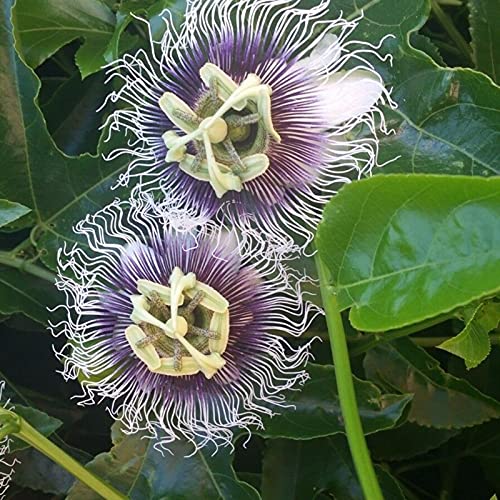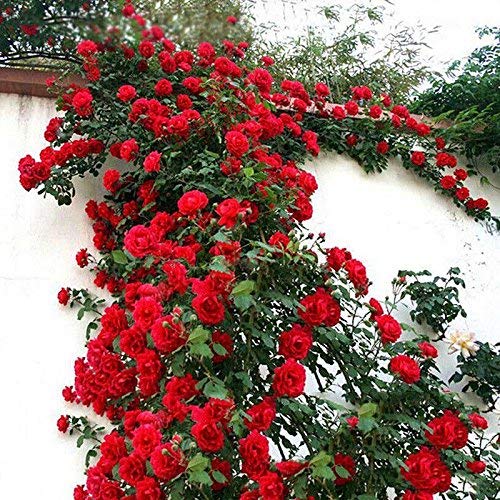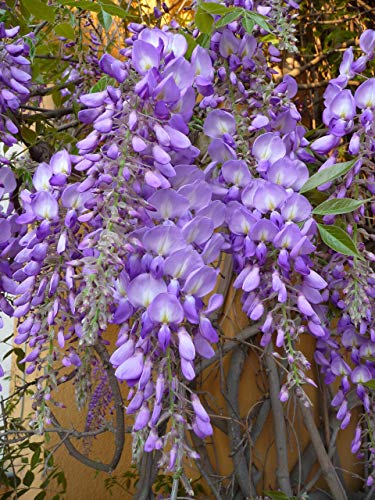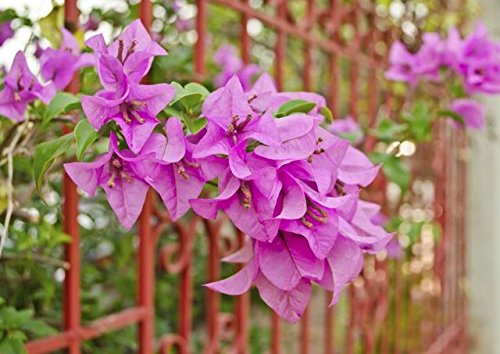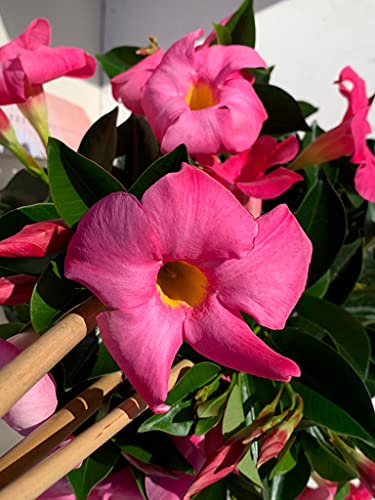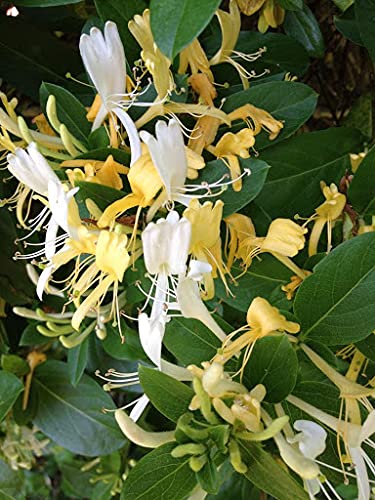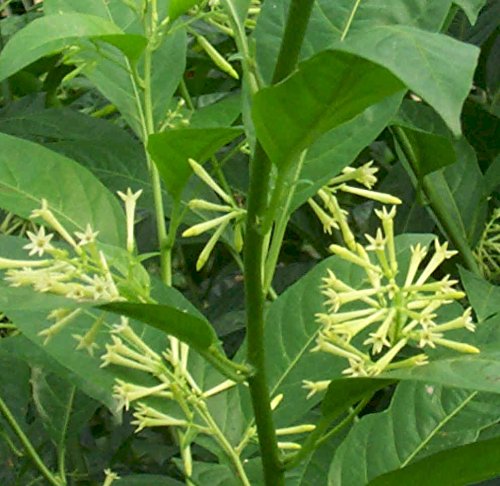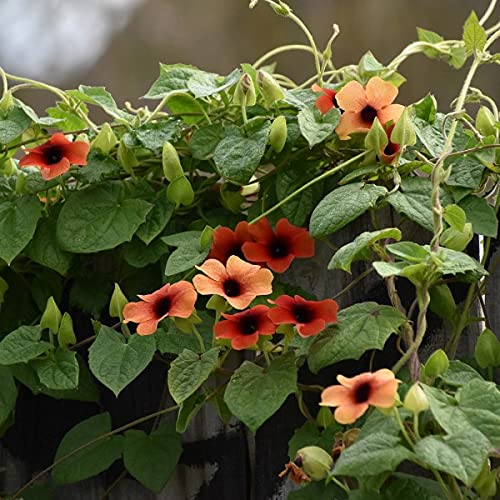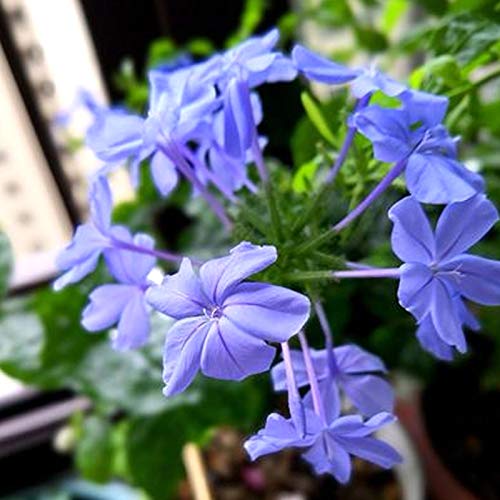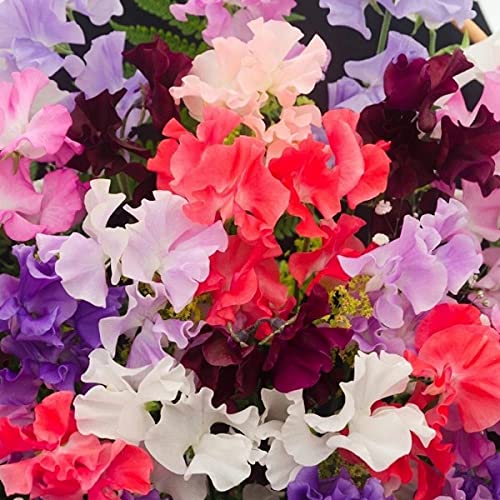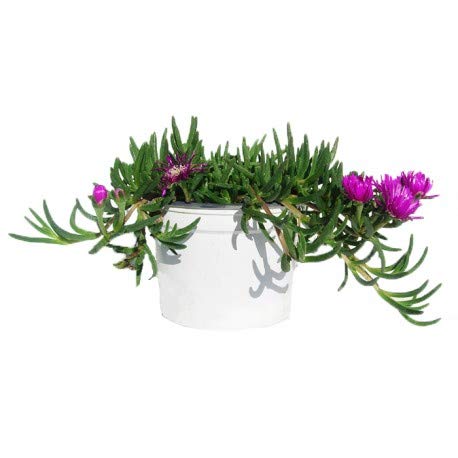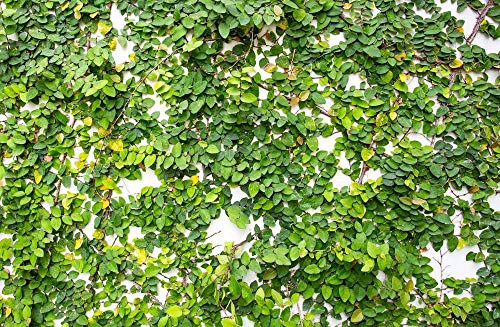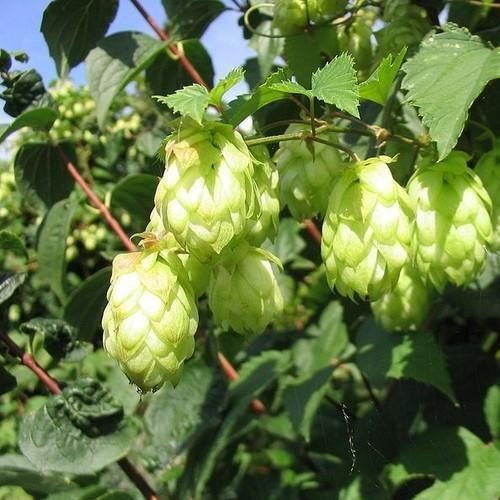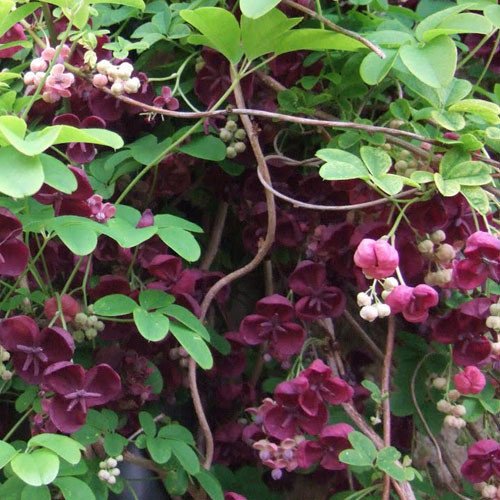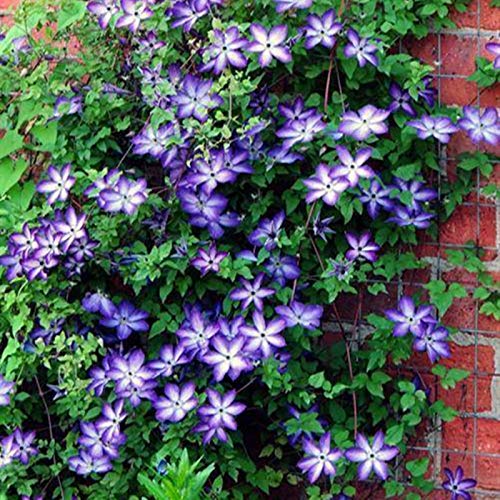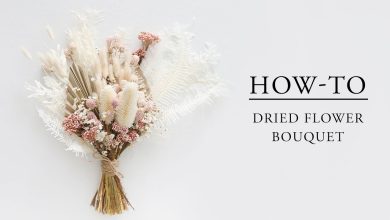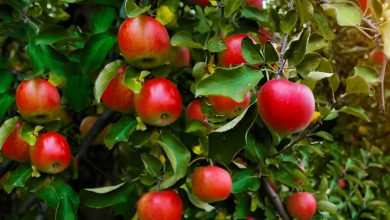Climbing Plants with Flowers: [Characteristics and Images]
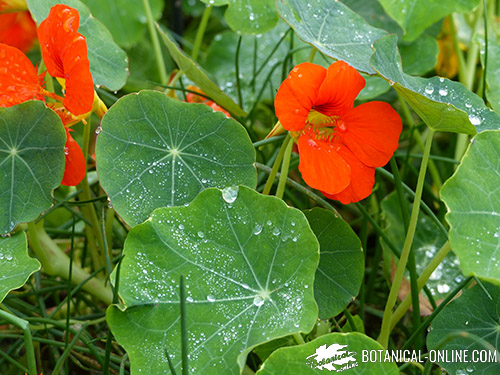
What information will you find in this article?
Meet 15 of the most beautiful and striking flowering climbing plants:
- Passion flower (Passiflora Caerulea). Originally from the tropical regions of America, the passion flower is a climbing, perennial and woody plant.
- Climbing roses. Roses arethe favorite of many people, although their thorns cause damage when touched.
- Wisteria (Wisteria sinensis). During the spring, the spectacular wisteria presents a magnificent bloom of beautiful lilac, blue or white colors.
- Bougainvillea (Bougainvillea, spp). In the Mediterranean, bougainvillea is considered one of the treasures of the region.
- Chilean Jasmine (Dipladenia). Also known by the name of mandevilla, the Chilean jasmine is a flowering climber that captivates with its rapid growth and its aromatic and long-lasting flowering.
- Honeysuckle (Lonicera japonica). Honeysuckleis a climbing shrub native to the northern hemisphere and belongs to the Caprifoliaceae family.
- Gallant at night (Cestrum Nocturnum). The gallant at night is a semi-climbing shrub of theSolanaceae, with entire persistent or deciduous leaves.
- Thunbergia (Thunbergia alata). It is a climbing plant, known by the name of «poet’s eyes», «Susana of the black eyes» and belongs to the Acanthaceae family.
- Plumbago. It is a climbing, evergreen shrub of the Plumbaginaceae family, highly valued for decorating gardens and house exteriors.
- Sweet pea or sweet pea (Lathyrus odoratus L). The pea plant is an annual, herbaceous, climbing species of the Fabaceae family and native to the Mediterranean region, from Sicily to eastern Crete.
- Cat’s claw (Uncaria tomentosa Willd DC.). It is a bushy, woody plant of the Rubiaceae family and has its origin in South America, especially in Peru, Colombia and Bolivia.
- Climbing fig tree (Ficus pumila). It is aplant, of the Moraceae family and has its origin in East Asia.
- Hops (Humulus lupulus). Hops is a climbing plant that uses its robust stems, provided with trichomes to hold on to supports, walls or walls.
- Akebia (Akebia quinata). It is a climbing and bushy plant of the lardizabalaceae family that has its origin in China, Japan and Korea.
- Clematis. It is aplantof the ranunculaceae family and the magnoliopsida class.
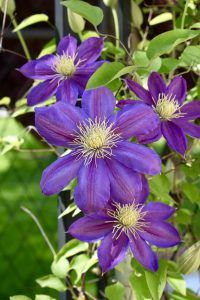 The variety and beauty of flowering climbing plants adorn human architecture with their perfect nature.
The variety and beauty of flowering climbing plants adorn human architecture with their perfect nature.
Flowering climbing plants are highly versatile and can add colour, beauty and fragrance to the décor of public or private spaces.
They are an excellent choice for adorning porches, patios, arbors, trellises, fences, walls, flower box borders, and well-lit creative interiors.
Among flowering climbing plants it is very difficult to choose the most beautiful, but among them one can single out:
1. Passion Flower (Passiflora Caerulea)
Originally from the tropical regions of America, the passion flower is a climbing, perennial and woody plant. It has tendrils in the axils of the leaves (the ones it uses to climb), with many ramifications.
The passion flower is characterized by its beautiful persistent foliage of pink, purple or white colors that has very original edible fruits.
It is a fast-growing plant if it is located in full sun and the humidity of the substrate remains constant. It likes abundant watering and spraying when it is very hot and must be protected from frost.
It owes its name to the vision of a Peruvian Jesuit monk who recognized, in the different components of this extraordinary flower, a symbolism with the Passion of Christ.
2. Climbing rose bushes
Roses are the favorite of many people, although their thorns cause damage when touched. But, the climbing rose bushes use the thorns to hold on to the structures and supports from which their clusters hang.
The flowering of climbing roses occurs in the spring offering a beautiful show of different colors ranging from pink, red, white or yellow.
Rose bushes need constant watering, a full sun location and an organic fertilizer every year to improve the appearance of the roses, and to restore their nutrients.
In general, roses are very sensitive to attack by insects, so it is recommended to maintain good monitoring and control of pests.
3. Wisteria (Wisteria sinensis)
During the spring, the spectacular wisteria presents a magnificent bloom of beautiful lilac, blue or white colors. Wisteria is a shrubby, deciduous and climbing plant of the legume family that can live up to 100 years.
It grows in any type of soil that easily retains moisture and can be located in full sun or partial shade. As it is an invasive plant, it requires a good pruning, during the month of September when it finishes flowering, to control its expansion.
4. Bougainvillea (Bougainvillea, spp.)
In the Mediterranean, bougainvillea is considered one of the treasures of the region. It is a climbing plant that is maintained for long years in tropical climates, since it does not tolerate sudden changes in climate.
Its flowering is not as it seems. Its flowers are actually bracts of intense colors that go from fuchsia to red, passing through orange. It is sober in its maintenance requirements. It grows in any type of soil, but needs a lot of direct sunlight and little watering.
5. Chilean Jasmine (Dipladenia)
Also known by the name of mandevilla, the Chilean jasmine is a flowering climber that captivates with its rapid growth and its aromatic and long-lasting flowering.
The Chilean jasmine, whose origin is not that country, but Brazil, is a climbing shrub, with woody stems, which can reach between 5 and 9 meters in height.
It is highly valued for locating its planting on the facades of houses and in case of planting it in pots, a good size container should be used to give space to its roots. It supports a lot of heat, but it does not like extreme cold and with less than 10 degrees its health is compromised.
For its cultivation, the use of a nutrient-rich substrate that has good drainage is recommended. The watering of the Chilean jasmine should be abundant, but spaced over time, twice a week would be good to maintain its hydration.
When the Chilean jasmine finishes flowering, pruning is recommended to help the best development of the plant.
6. Honeysuckle (Lonicera japonica)
Honeysuckle is a climbing shrub native to the northern hemisphere and belongs to the Caprifoliaceae family. It can live in any type of terrain, but it prefers somewhat calcareous soils that contain organic matter.
The plant requires a lot of direct sunlight, although it can grow in the shade, but it will not give the same quantity and color of its flowers.
Honeysuckle requires moist soil rich in organic matter to produce large, beautiful, scented flowers. It is a highly valued plant and easy to grow to cover walls, pergolas, fences or to cover informal hedges.
7. Gallant at night (Cestrum Nocturnum)
The galán de noche is a semi-climbing shrub of the Solanaceae family, with entire persistent or deciduous leaves. It is a plant native to Central America and South Asia that is currently found throughout the world.
It tolerates all types of soil, but requires a bright location, and high temperatures can affect its development and growth.
The watering for the gallant at night must be frequent with little water; every other day, that is, one day yes and the other no. It needs a flowering plant fertilizer that is rich in iron, to ensure it stays green.
Night beau requires drastic pruning, in early spring and early summer, to improve the overall shape of the plant.
8. Thunbergia (Thunbergia alata)
It is a climbing plant, known by the name of «poet’s eyes», «Susana of the black eyes» and belongs to the Acanthaceae family.
It is a species native to the tropical regions of Africa, Madagascar and southern Asia. Thunbergia has large, oval, evergreen leaves that develop in intersalt pairs and can reach a height of 5 m.
It has a very varied, colorful and very beautiful flowering that makes it highly valued for covering and decorating trellises and pergolas in gardens.
Its cultivation is very simple, it only requires a place in full sun, semi-shade or shade, a substrate rich in nutrients and with good drainage and frequent and moderate watering. The thunbergia plant needs a fertilizer every fifteen days and a maintenance pruning in autumn or at the end of winter.
9. Plumbago
It is a climbing, evergreen shrub of the Plumbaginaceae family, highly valued for decorating gardens and house exteriors. The plumbago has many varieties, among which the auriculata, the rosea and the European stand out.
It has abundant and prolonged flowering with its inflorescences with light blue spikes, very delicate and beautiful. It blooms almost all year round, except in cold winters.
It is known by the name of blue jasmine or matchmaker. It requires a location in full sun and the more sunlight it receives, the more abundant its flowering will be.
Plumbago needs: a good substrate with drainage capacity; a constant watering, but not abundant, and a good pruning for its growth.
10. Pea (Lathyrus odoratus L.)
The pea plant is an annual, herbaceous, climbing species of the Fabaceae family and native to the Mediterranean region, from Sicily to eastern Crete.
It has a simple and striking flower of many colors ranging from pale pinks, through fuchsias and reaching intense violets.
The pea is resistant to heat, but it is recommended to locate it in areas little exposed to direct sun. They need winter care to survive frost.
It is ideal for decorating balconies and terraces due to the beautiful floral show they offer and also for their pleasant fragrance.
11. Cat’s claw (Uncaria tomentosa Willd DC.)
It is a bushy, woody plant of the Rubiaceae family and has its origin in South America, especially in Peru, Colombia and Bolivia. Cat’s claw grows as a large climbing or sometimes creeping vine, over 40 m long and can reach 20 m in height.
Its bark has longitudinal fissures, its leaves are perennial and its flowers have an intense yellow color. It requires a sunny place for its cultivation, soils or substrates rich in organic ingredients, frequent watering, but without flooding.
It is necessary to protect it from the cold of winter. Cat’s claw has been classified within medicinal plants due to its proven anti-inflammatory, cytostatic, antiviral, immunostimulant properties, among others
12. Climbing Fig (Ficus pumila)
It is a climbing and bushy plant, of the Moraceae family and has its origin in East Asia. It has small leaves and weak stems, which is why it climbs on different supports, such as tree trunks or rock walls.
The climbing fig tree does not have flowers per se, but leaves in the form of bracts that change color according to the season of the year; sometimes they are orange in summer and spring and other times reddish during autumn.
It is not very demanding in terms of its care, it only requires a cool location with good light and frequent watering, without puddles. It is a perfect species to cover large walls due to its rapid growth and low maintenance.
13. Hops (Humulus lupulus)
It is a climbing plant that uses its robust stems, provided with trichomes to hold on to supports, walls or walls. It is a perennial species with rhizomes as an underground storage stem, with lobed palmate leaves and can reach up to eight meters in height.
Hops have been very attractive to man. Its cultivation dates back to many years before Christ, due to its medicinal and cosmetic properties.
In history it can be found that the Babylonians used hops to make a drink called Sikar and the Romans used it as a seasoning element to enhance the flavor of some dishes. Currently, the fruit of hops is used for the manufacture of beer yeast.
14. Akebia (Akebia quinata)
It is a climbing and bushy plant of the lardizabalaceae family that has its origin in China, Japan and Korea. Akebia produces small flowers with rounded, purple petals that give off a fragrant, sweetish and pleasant aroma.
Its cultivation requires mild temperatures or winters to maintain its flowering. It is a kind of plant with male and female flowers, separated from each other, although they bloom at the same time.
Akebia offers a deep red bloom and produces pastel pink fruit when summers are warm. It is a beautiful plant that is also known by the name of «chocolate plant» and is highly appreciated by gardeners for decoration and ornamentation.
15. Clematis
It is a climbing plant of the ranunculaceae family and the magnoliopsida class. Its main characteristic is that it has huge flowers of various sizes and colors for all tastes.
It grows as a vine and also in pots or window boxes. The cultivation of clematis or clematis requires acidic soil rich in organic matter, such as guano. It also needs the soil to be able to drain well.
Its branches and flowers demand a lot of light for its growth, and its roots prefer to be cool, especially during the rooting process. It is a variety that does not support extreme temperatures of heat or cold.
The plant requires abundant irrigation but spaced out over time, avoiding excess water, especially during the first days of its cultivation.
In the Middle Ages, they called clematis «herb of the beggars» because beggars used it to produce sores on their bodies and be worthy of the pity of passers-by. In homeopathy it is used to cure pustules and rheumatic ailments.
Bibliographic references
- Climbing Plants, I Jachertz – 2006 – books.google.com
- Climbing plants: biological type and classification, PA Cabanillas, JA Hurrell – Morphological Sciences, 2012 – digital.cic.gba.gob.ar
- Diversity patterns of climbing plants and vascular epiphytes in the Valdivian rain forest of South America: a synthesis between the years 2000 and 2010, J Pincheira-Ulbrich – Phyton-Int. J. Exp. Bot, 2011 – researchgate.net
- The climbing plants of the Iberá macrosystem, MS Ferrucci, SA Cáceres Moral… – … presented at the 13th …, 2002 – researchgate.net
- The Movements and Habits of Climbing Plants, C Darwin – 2009 – books.google.com
- Climbing plants: Native and exotic. The most common climbing plants of the Rioplatense Region (Paraná Delta, Isla Martín García and Ribera Platense), HB Lahitte, JA Hurell – Biota rioplatense. 5., 2000 – sidalc.net
- Climbing Plants, S Buczacki – 1995 – books.google.com
Maybe you are also interested in:

